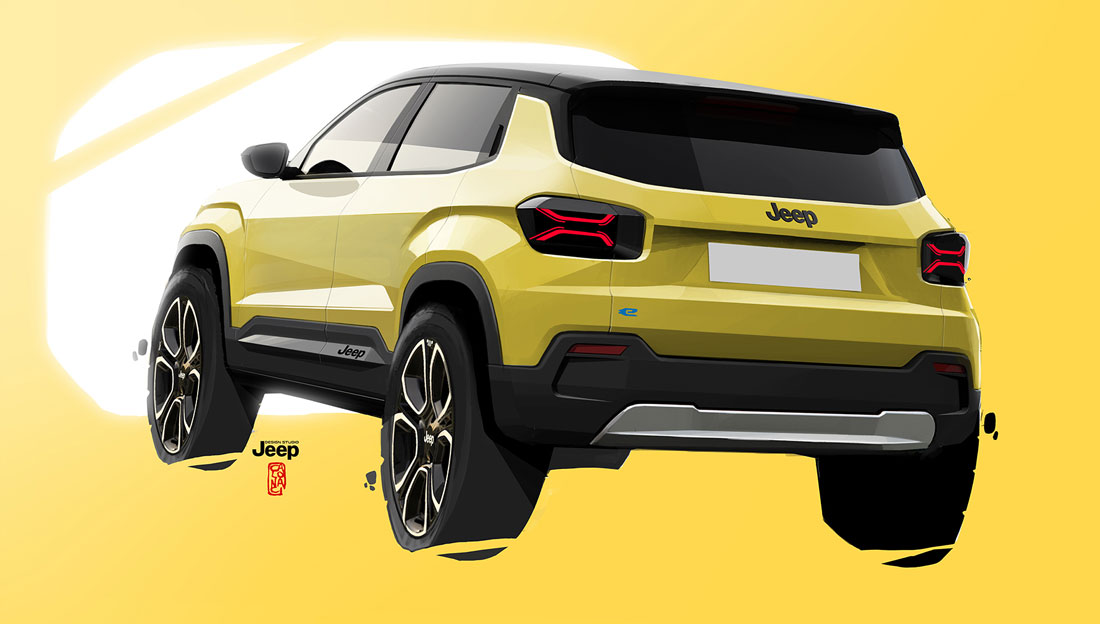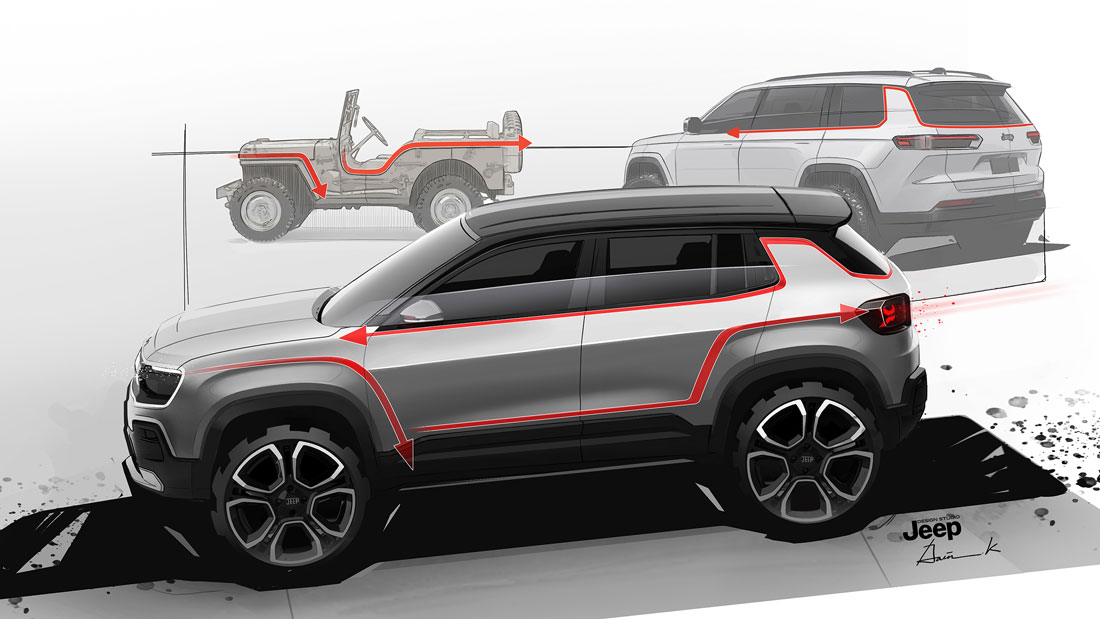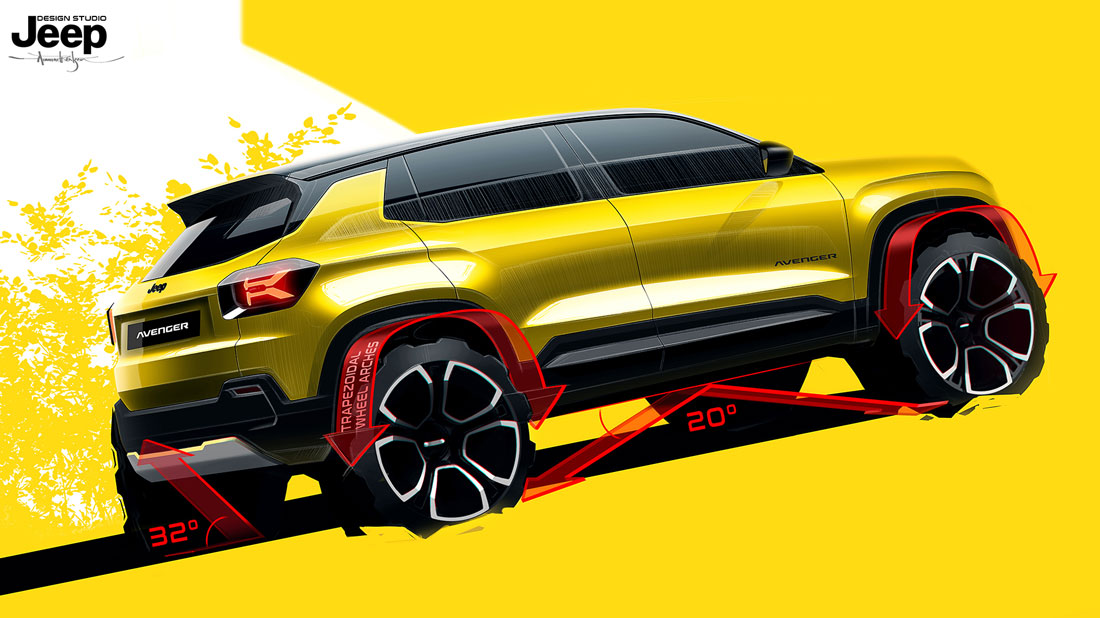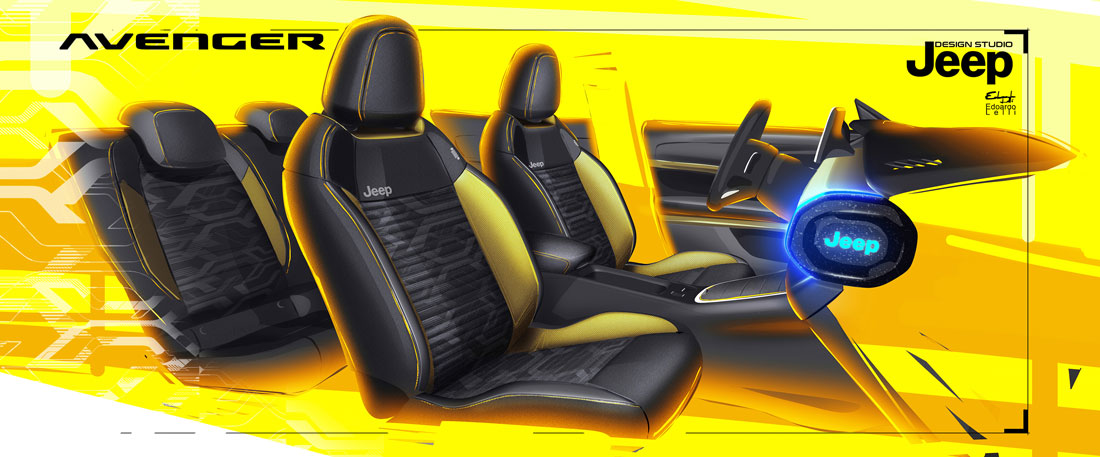Few automotive brands have such an authentically American image as Jeep does. That is why the Avenger surprises in every respect: apart from being the first pure electric-powered Jeep and the most compact one ever produced – with the exception of the original Willys –, it is entirely conceived, designed and built in Europe. A project carried out in Italy, in Turin, where designing Jeeps is nothing new. “We have always had a Jeep design centre in Europe, but it became more structured in 2019. Daniele Calonaci was appointed head of the studio, not only because of his talent but also because he is a great believer of the brand”, explains Gilles, who together with the American Jeep team followed the project from Auburn Hills, reviewing the drawings regularly sent from Italy.
Jeep DNA in 4.10 metres
Narrating the genesis of the Avenger is Calonaci himself, who sums up the brief he received for the project as follows: “We had to concentrate 100 per cent of the Jeep DNA in 4 metres. Although completely new – a true “game changer”, as Stellantis defines it – the nascent compact SUV for the B-segment had to be immediately recognisable as a Jeep. The founding concepts of the brand’s philosophy were the starting point: from the sense of freedom (in this case, small dimensions mean agility for moving around in traffic as well as off-road), to the appeal of being young and fun, to the “tech” aspects. “We are a technical brand par excellence and for the Avenger this was even more important as it is the first EV in our history. It is functionality that becomes form, we will never abandon this ‘design to function’ approach”, assures Calonaci.
Working on aerodynamics
First of all, together with the engineers, they defined the proportions to be achieved on the Stellantis Group’s e-CMP platform, according to a very clear architecture: a wide wheelbase for the benefit of interior space, large wheels, ground clearance of 200 mm and limited overhangs that made it possible to obtain ideal values for the angles of approach (20°), breakover (20°) and departure (32°). Volumes and surfaces have thus taken shape in a mix that sees the brand’s typical stylistic features linked to technical requirements, starting with aerodynamics, essential for the fuel efficiency of an electric car. The designers have also worked on the curvature of the typical trapezoidal wheel arches, making them a little less square in terms of drag coefficient, but the side is no less Jeep-like, also thanks to the two lines that define it, derived from the Willys: one that delimits the front mudguard, the other that joins the door sill to the end of the car.
Reinterpreting the grille
The most iconic of Jeep’s styling cues, however, remains the “7-slot grille”. It is the very face of the brand, and it was here that the most decisive choice had to be made, since the electric drive did not require a real air inlet except at the bottom of the front, as Ralph Gilles recounts: “We immediately asked ourselves what to do, since it is such a typical element. In the initial sketches we saw this sort of mask that includes the headlights, which is very modern in its look. We debated for a long time whether or not to include the “7 slots” or to go for a fresh start, but we decided that we wanted a Jeep that was recognisable even 20 metres away. So it’s a reinterpretation of the grille in a graphic way: iconic but modern at the same time”. A choice that still has a functional value even if the seven slots are closed, adds Calonaci: “We mounted the grille in front of the headlights, so that the light clusters are encased protected lights and are not the first contact surface, in the city as well as outdoors”.
Highly recognisable
The rear view is also very recognisable and has a link to the Jeep range, as the light clusters reinterpret the X sign of those on the Renegade, inspired at the time by the “jerrycan”, the fuel tank. For the interior, the reference is the Wrangler, “with a coloured fascia into which the components fit. We worked on a negative section in which a functional beam is embedded, with a horizontal approach to give visual breadth, and a minimal design so that it is also easy to clean”. Also central to the design of the interior is the “hyperstorage” concept: the numerous storage compartments, many of which are modular, offer a total capacity of no less than 34 litres, when the segment average stops at 15.
The interior surprises
An interior to be explored, and while you’re at it you encounter the numerous “Easter eggs”, little surprises, that the designers wanted to scatter throughout the car, such as the silhouette of a child looking at the stars with a telescope (at the base of the windscreen), the outline of the mountain range that surrounds Turin (on the rear window) or again, on the outside, the ladybird in relief on the roof bar. A European ladybird, with a seven-point livery, the designers specify, just as the Avenger’s seven launch colours. But they do not reveal how many and where all the Easter eggs are: exploration and fun are part of the Jeep DNA.
(Full article in A&D no. 258)
















